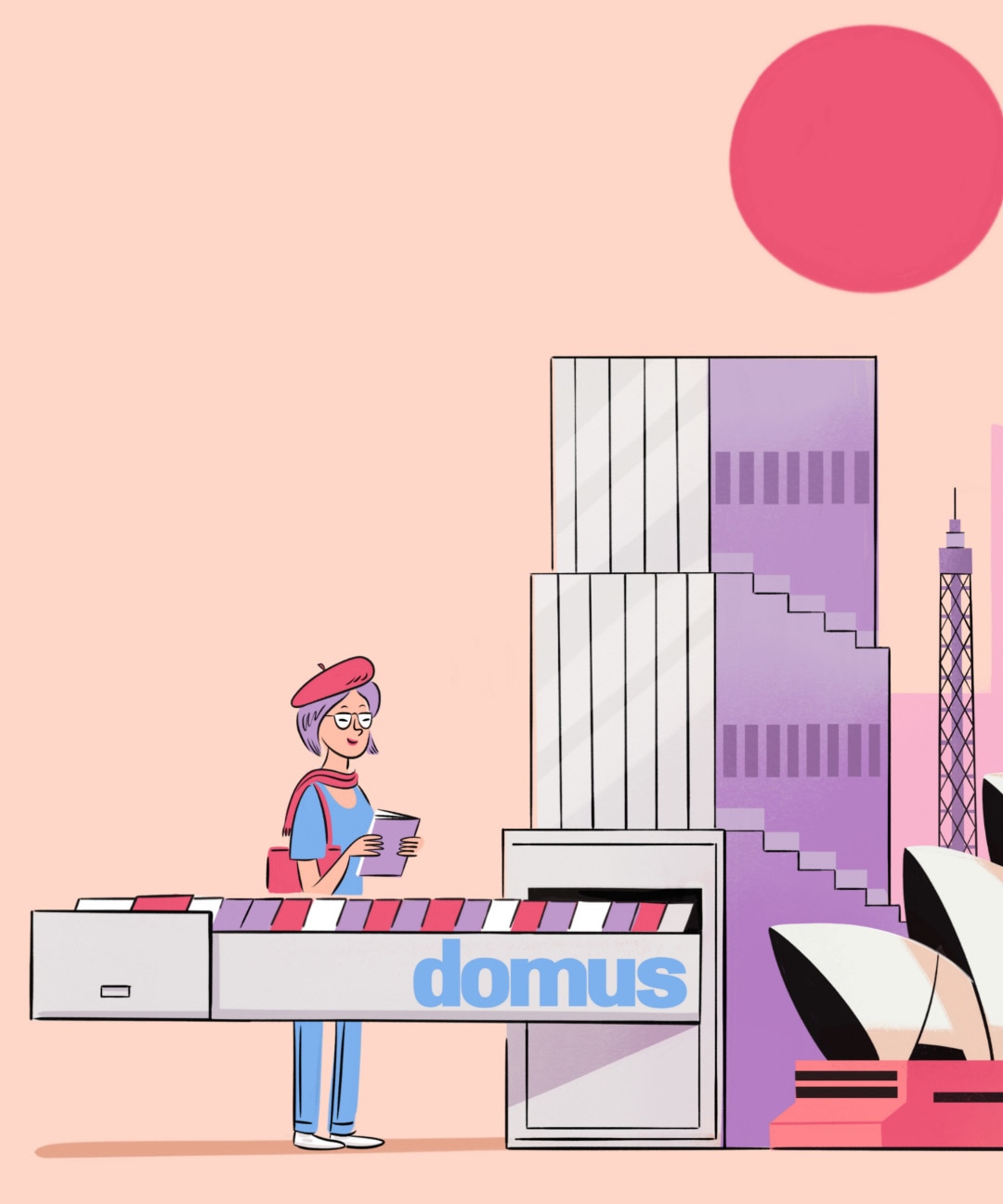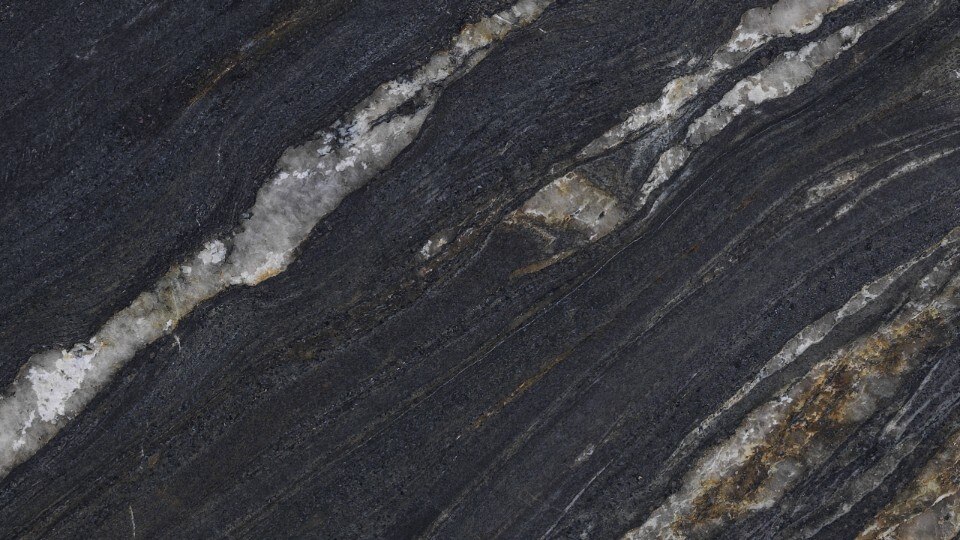There is a moment of Italian television from 1967 where Raffaella Carrà – here at one of her first experiences as a presenter and with a pompously combed hairdo still far from the iconic bob she’ll be soon known for – hosts the show Tempo di Samba (Samba Time). Together with her guests Roberto Carlos and Astrud Gilberto, Raffaella moves within a set design that combines psychedelic-patterned steps, on which the orchestra conducted by the maestro Cichellero stands, and a metaphysics-flavoured scaffolding made of metallic pipes (Japan pavilion at the Biennale anyone?).
Fast forward three years and the minimalistic and psychedelic scenes designed by Armando Nobili - similarly to the essential ones by Carlo Cesarini di Senigallia for Studio Uno - leave room, on a both architectonic and symbolic level, to those by Tullio Zitkowsky. While Carrà - with a far from stupid light-heartedness - contributes to the affirmation of the gender equality argument that is sparking the feminist debate of that time, Zitkowsky conceives a sci-fi-flavoured geodome for the exhibitions of the singers partaking the competition and for the skits of the hosting duo Corrado-Carrà. The roman set designer makes a clever and pioneering use of the space available, unusually placing the audience on the sides of the studio and introducing RAI (Italian state television) to the 1970s by adopting electronic boards. An avant-garde artist nonetheless, he will also design scenes for the first colour tv shows of the Italian television and an uber-realistic grass surface made of hand-twisted raffia for the 1972 proto-ecologist show C’è Celentano.
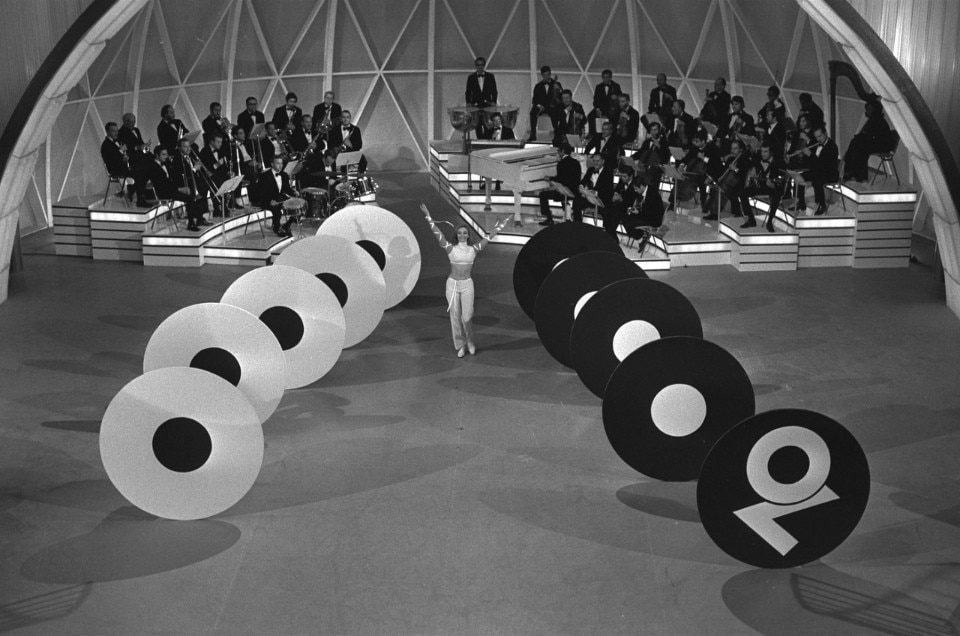
After all, these are years when RAI hires professionals of the calibre of Achille and Pier Giacomo Castiglioni and graphic designer Pino Tovaglia for the design of the company’s pavilion at the 1965 Milan Fair. As a consequence of this, the RAI tv sets embody the apex of interior design in Italy, where the anti-architecture and op-art experimentations of the ‘radical’ discotheques meet with the three-buttoned officialdom of state television. A silver lining that links RAI's tv shows to the industrial and set designs of the time, two spheres of the discipline that find in Raffaella Carrà a new face.
Both a host and a singer, Raffaella Carrà takes on RAI's Saturday night prime time and aids its transition from the ‘60s to the ‘70s, rejuvenating the image of its shows...
Both a host and a singer, Raffaella Carrà takes on RAI's Saturday night prime time and aids its transition from the ‘60s to the ‘70s, rejuvenating the image of its shows, that were still influenced by the intromission of the Vatican into Italian politics, like those presented by Mina and Corrado (take, for instance, an episode of music show Canzonissima ‘70 where Carrà, witty but sapphic, ties the wrists of the male co-host Corrado with a see-through silk cravat). With this double role she therefore succeeded where many other musicians, with whom RAI had tried to capture a younger audience, failed.
Hence, it does not surprise if across the two decades Carrà is a testimonial for Innocenti and Agip, both symbols of the Italian economic progress and industrial design, pride of a country that was only just discovering the controversies highlighted by the inflammatory youth contestation and by the trade union strikes of the Seventies.
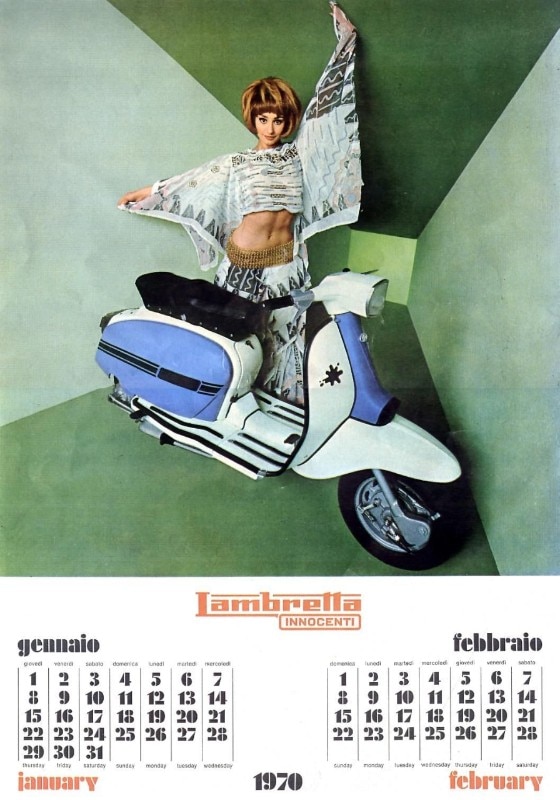
For Innocenti, Carrà is the face of the Mini 1001 campaign and of the 1970 calendar, in which she can be seen posing with the Lambretta GP200 and with the Lui; one of the least successful scooters of the brand yet one of those with the most inspired communication strategy reminiscent of the sci-fi style also adopted by B&B for its UP armchair series designed by Gaetano Pesce (1969).
In 1972, for the “Big Bon” Agip campaign - either leaning on a Lamborghini prototype, with a Fendi luggage set, or surrounded by gas station attendants (faithful to her just like her RAI dancers) - Carrà already unifies Italy together, becoming ambassador of that “peninsula behind the wheel” that Piero Ciampi sings about with disenchanted irony. In the adverts Raffaella wears a black PVC catsuit that simultaneously brings forward the sexual revolution she started on the television and becomes the epitome of the swan song to plastic in Italian fashion and interior design, just one year ahead of the 1973 oil crisis. The catsuit features an arrow-shaped modernist logo in a red-orange gradient that strikes resemblances with that adopted by Piero Gratton in both the revolutionary Pouchain-manufactured ‘lollipop’ kit designed for AS Roma in 1978/79 and in the new logo for TG2, the newscast of RAI’s second channel.
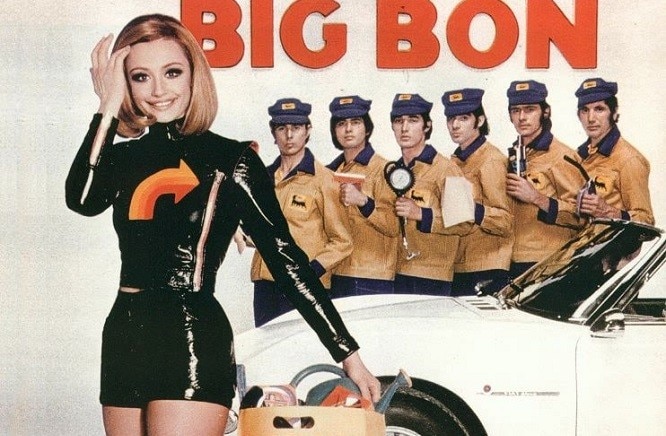
After all Raffaella has always been able to introduce the Italian audience to the new steps of pop culture: the sexual liberation and the advent of colour television first...
If Gratton is the man responsible for the colour switch on of Italian television, Raffaella, after all, cannot miss - alongside singer and television personality Mina - Milleluci, the first Italian prime time TV show in full colour. It is indeed colour that reigns in the sci-fi scenes of “Starlight Express”, the Carrà-starring musical featured within the TV show Buonasera Raffaella. In the show she relentlessly moves from flawless dance moves in space armours to interviewing the then prime minister Giulio Andreotti, wearing the most charming of white twinsets.
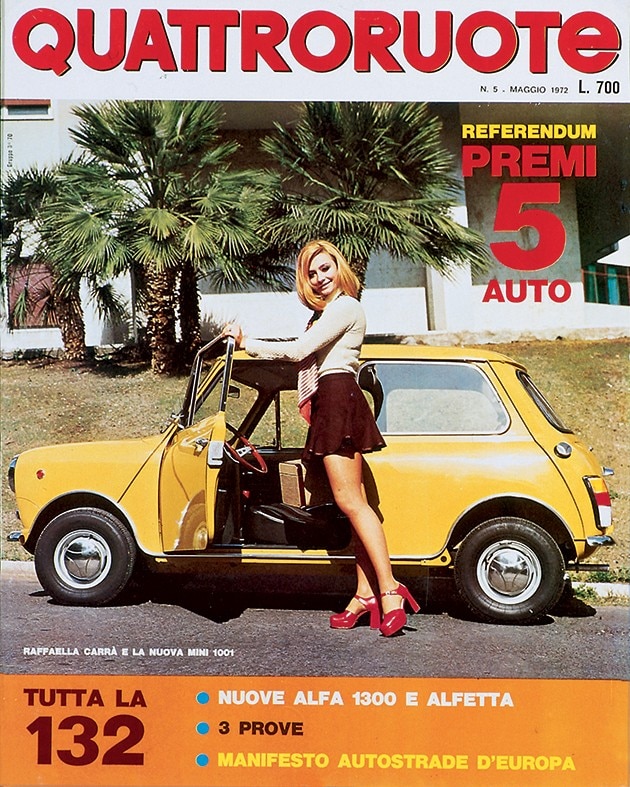
After all Raffaella has always been able to introduce the Italian audience to the new steps of pop culture: the sexual liberation and the advent of colour television first, the shows pioneering the interaction with the audience from home (Pronto Raffaella) and the proto-reality shows (Carramba Che Sorpresa) then.
Raffaella, quintessential pop icon, a charming familiar face for the housewives, yet also able to embody the wild jezebel of Italian morality. By showing off the belly button (wearing, for her Canzonissima ‘70 debut, an outfit made of white low-waisted flared trousers and a high-neck crop top featuring silky strings gently wrapping her bare arms) she freed Italy, introducing with sparkling wit themes close to the queer community, of which she became - together with singer and performer Renato Zero - a spontaneous icon far from any political malice of sorts.
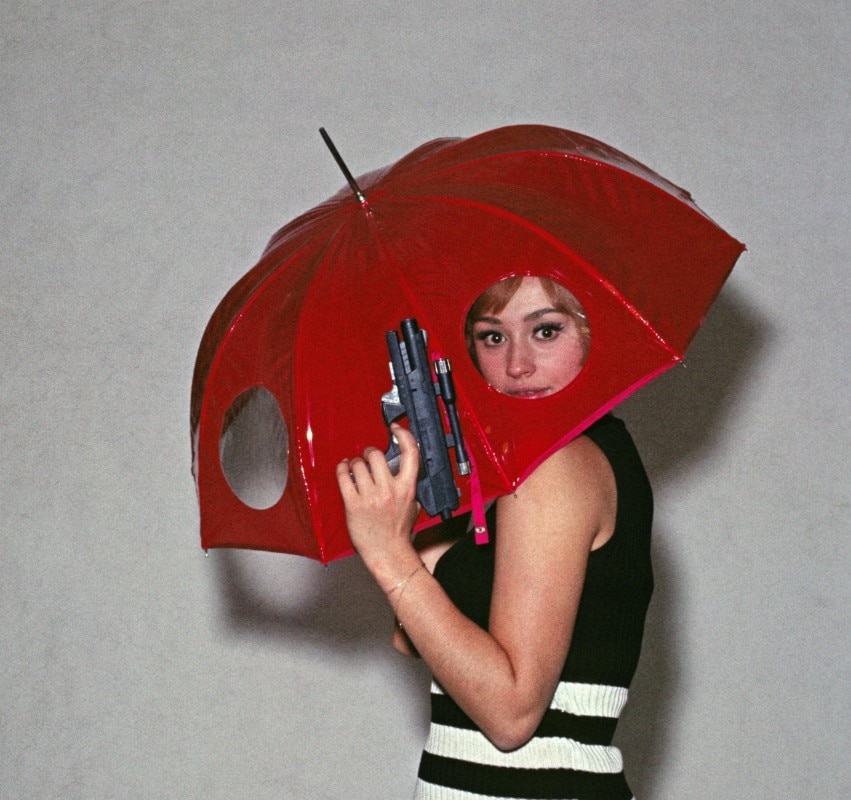
The song “Luca” embodies this social dualism incarnated by Raffaella in the line: “He was in my mind all day, without even cheating on him with my thoughts, but one afternoon I saw him from my window with a blonde guy [...] and since that day I saw him no more.”
Manifesto of a Mediterranean approach to life, Carrà was also the bridge between the old world and South America, succeeding - more than singer-songwriter Lucio Battisti - in becoming the spokesperson of a pan-Latin sound and culture that still rules the charts in the summer.
In 1984 Raffaella signs a deal as the face of Scavolini kitchens, “Italian because beautiful, practical to live in and made to last” she says with charm in the TV advert, looking like a motherly figure but certainly not less diva in her style. And now, that reality show chefs have become the testimonials of the brand, we cannot help but launch a petition to award the Compasso d’Oro to Raffaella in virtue of her platinum bob cut, a true and long-lasting icon of Italian design in the world.
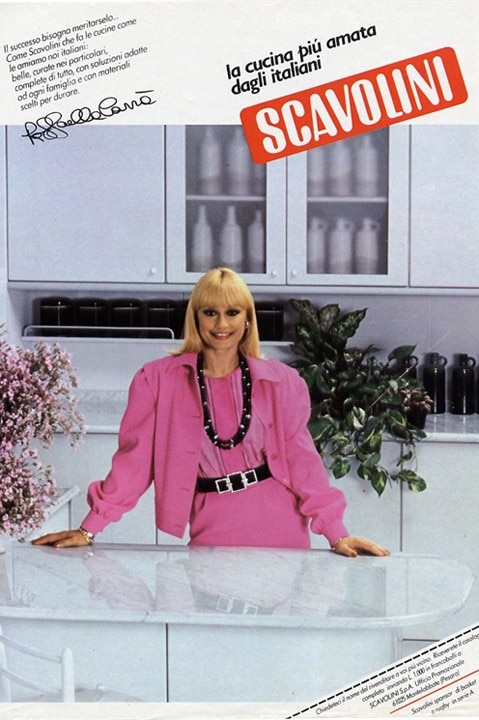
Opening image: Raffaella Carrà on a Lambretta scooter.
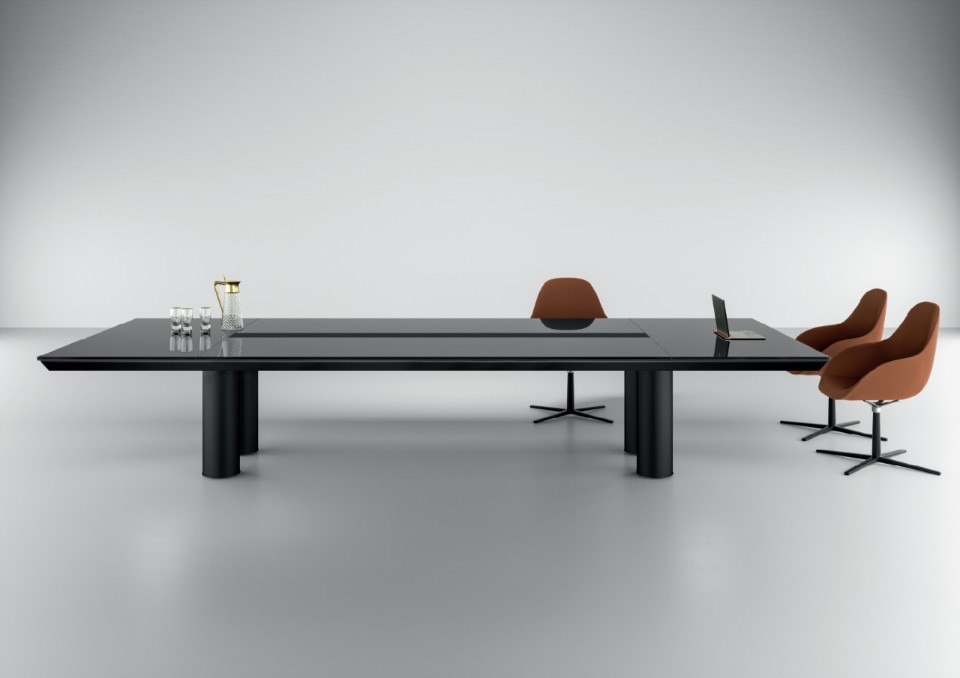
Innovation and timeless elegance
Han by Martex is a modular executive system that blends functionality with premium materials. A contemporary classic, designed for evolving executive spaces for over 25 years.


